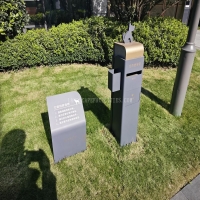Welcome to the website for landscape facilities products and knowledge.
How does the table’s design ensure it remains comfortable for users in snowy conditions?
When snow blankets outdoor spaces, conventional tables become unusable monuments of discomfort. However, specially engineered snow-proof tables incorporate multiple design elements that ensure remarkable comfort even in frosty conditions. The secret begins with integrated heating systems concealed beneath durable tabletops. These subtle warming elements maintain surface temperatures between 15-20°C (59-68°F), preventing snow accumulation while providing gentle warmth to users' hands and forearms during winter dining experiences.
Beyond heating technology, advanced snow-resistant tables feature precisely angled surfaces between 25-30 degrees. This calculated slope allows snow to slide off naturally before accumulating, while remaining gentle enough to prevent objects from sliding during use. The materials selection proves equally crucial - manufacturers utilize composite materials with low thermal conductivity that resist becoming cold to the touch. These specialized surfaces feel noticeably warmer than traditional wood or metal tables even without active heating.
Comfort extends to the structural design through strategically placed heating vents around seating areas. These discreet openings direct warmth toward users' lower bodies, creating micro-climates of comfort approximately 5-7 degrees warmer than ambient temperatures. The tables' legs incorporate anti-freeze footings that prevent freezing to ground surfaces, eliminating the awkward rocking motion common with frozen conventional tables.
Drainage systems represent another comfort innovation. Hidden channels within table edges collect melting snow and direct moisture away from users, preventing the dreaded cold water drip onto laps and clothing. These moisture-management systems work in tandem with quick-drying seat materials that resist moisture absorption, ensuring users never rise from snowy-weather dining with damp clothing.
The integration of wind-deflecting panels along table perimeters provides additional comfort without obstructing views. These transparent barriers reduce wind chill by up to 40% while maintaining visual aesthetics. For extended winter usability, many models include optional overhead radiant heaters that maintain comfortable air temperatures within a 2-meter radius of the table.
Through this multi-layered approach combining thermal engineering, moisture management, and ergonomic design, modern outdoor tables transform snowy conditions from an obstacle into an opportunity for comfortable outdoor living. The result is year-round usability that encourages outdoor activity regardless of weather conditions, proving that winter dining need not be sacrificed to seasonal changes.
Related search:

Recommendation
Outdoor cat and dog feces trash can; Community pet trash can; Metal multi-color design